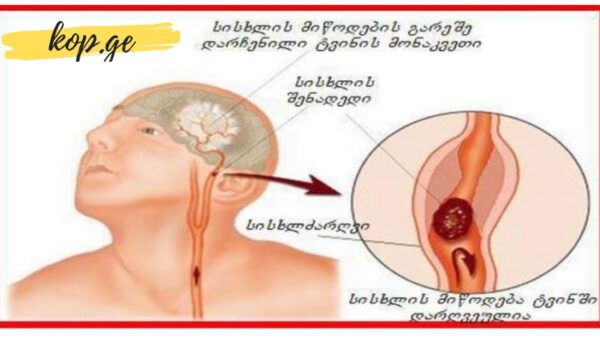Everyone, Read This! A Very Important and Easy-to-Remember Text

Sometimes life changes in just a few moments. One small decision, one overlooked sign, or one delayed reaction can make the difference between life and death. This story is a powerful reminder of how crucial it is to know the signs of stroke and act quickly. Please read carefully—this text is simple, memorable, and could save someone’s life, maybe even your own.
A True Story at a Picnic
At a family picnic, a woman suddenly stumbled and fell. Everyone rushed to her aid. They asked if they should call an ambulance, but she declined, insisting she was fine. She explained that she had tripped on a stone because of her new shoes. On the surface, this explanation sounded reasonable, but those who looked closer noticed she appeared pale and was trembling. Her friends helped her brush off her clothes, gave her some food, and she seemed to recover.
The rest of the day continued without any major incident. She laughed, talked, and even enjoyed the picnic. Hours later, however, her husband informed everyone that she had been taken to the hospital. Sadly, by 11:00 p.m. that night, she passed away.
The cause? A stroke—a sudden interruption of blood flow to the brain. If her friends had recognized the early warning signs, she might have received urgent medical care in time to survive.
This heartbreaking story emphasizes an essential truth: strokes do not always kill instantly. In fact, in many cases, if treated quickly, the outcome can be dramatically improved. That is why it is so important for every one of us to know how to recognize a stroke immediately.
Why Every Minute Counts
When a stroke occurs, brain cells are deprived of oxygen and begin to die within minutes. The longer treatment is delayed, the greater the damage. Permanent disability, loss of speech, paralysis, and even death are common consequences. Doctors often say: “Time lost is brain lost.” Quick action is the only way to save brain tissue and prevent devastating outcomes.
Now, here is the most important part: learning to recognize a stroke is not complicated. It only takes one minute of your time to remember these four simple steps.
Four Easy Ways to Recognize a Stroke
Doctors and health organizations worldwide agree on a quick checklist anyone can use. Here are the four key tests you should try if you suspect someone is having a stroke:
Ask the person to smile.
If they are unable to smile normally, or their smile looks uneven and one side of the face droops, this is a strong sign of a stroke.
Ask them to speak a simple sentence.
For example: “Today is a sunny day.” If they struggle to speak, slur their words, or cannot form a coherent sentence, it indicates a problem.
Ask them to raise both arms.
If they cannot lift one arm, or if one arm drifts downward, that is another clear warning sign.
Ask them to stick out their tongue.
If the tongue appears crooked, twisted, or uneven, it is a red flag.
What To Do Next
If the person fails even one of these four simple tests, do not wait. Call emergency services immediately and describe the symptoms. Acting quickly can save a life. Doctors stress that emergency treatment within the first three hours of a stroke greatly increases the chances of recovery and survival.
A well-known cardiologist once said: “If even 10 people share this information, at least one life will be saved.” Every day we share jokes, photos, or trivial messages online. But this is knowledge that could actually prevent tragedy. Why not pass it along to friends and loved ones?
The Importance of Awareness
Strokes are one of the leading causes of death and disability worldwide. What makes them especially dangerous is that many people either do not recognize the symptoms or wait too long to seek help. Awareness campaigns are helping, but it is up to all of us to spread the word.
Think of the woman at the picnic: her friends thought she was fine because she said so. But strokes can be deceptive. A person may appear almost normal while the brain is suffering irreversible damage inside. This is why knowledge is power. Recognizing the signs and acting without hesitation can give someone a second chance at life.
Practical Tips to Reduce Your Risk of Stroke
While knowing how to respond is critical, prevention is equally important. Here are some lifestyle changes that significantly lower stroke risk:
Monitor blood pressure regularly. High blood pressure is the number one cause of stroke.
Keep blood sugar under control. Diabetes increases stroke risk dramatically.
Maintain a healthy diet. Focus on fruits, vegetables, whole grains, and foods rich in vitamin P (found in oranges, berries, and other brightly colored produce) to strengthen blood vessels.
Exercise moderately. Avoid extreme physical strain but try to stay active daily.
Limit smoking and alcohol. Both increase the likelihood of stroke and other vascular problems.
Visit your doctor regularly. Routine check-ups can catch warning signs early.
Final Thoughts
This story and the lessons it teaches are not meant to frighten you but to empower you. Strokes are medical emergencies, but they are also battles we can win if we act quickly and wisely. All it takes is remembering four simple steps: smile, speak, raise both arms, stick out your tongue.
If someone shows difficulty in any one of these actions, treat it as an emergency—because it is. Do not let embarrassment or hesitation delay a call to emergency services.
Every day we exchange countless messages. Let this be the one message that makes a real difference. Share it with your family, your friends, and your community. You never know whose life might depend on it.
✅ Remember: Awareness saves lives. Your quick action could prevent tragedy.












